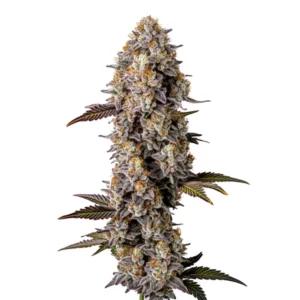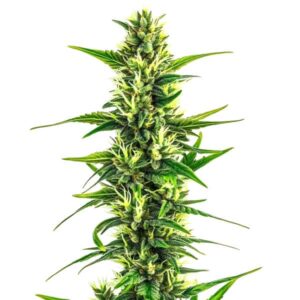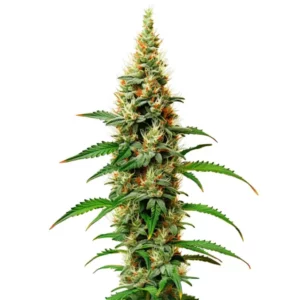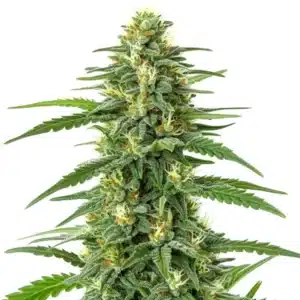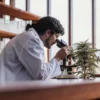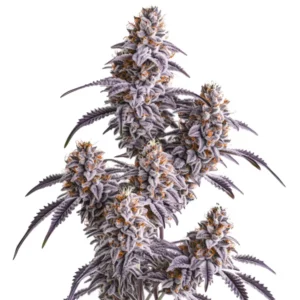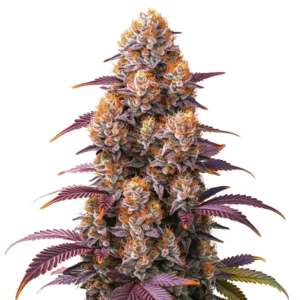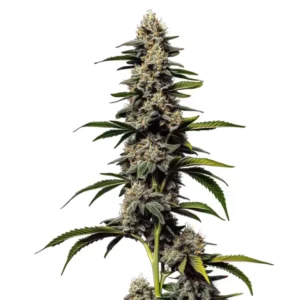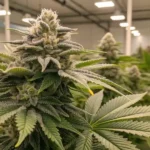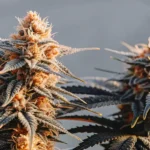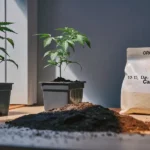
Your Indoor Sun: A Grower’s Guide to Choosing a Grow Light
Let’s talk about the single most important piece of equipment in your entire indoor grow. It’s not your tent, not your nutrients, not your soil. It’s your light.
Your grow light is your sun. It is the engine that powers your entire operation. A weak engine gives you a weak plant. A powerful, efficient engine gives you a monster. Getting this right is everything.
Recommended Strains
Permanent Marker
|
|
THC | 32% - 34% (High) |
|
|
Type | Feminized |
|
|
Yield | High |
|
|
Phenotype | 50% Indica / 50% Sativa |
Permanent Marker Auto
|
|
THC | 32% - 34% (High) |
|
|
Type | Autoflowering |
|
|
Yield | Medium |
|
|
Phenotype | 50% Indica / 50% Sativa |
Choosing Your “Sun”: The Big Three
When you’re choosing a light, you’re essentially choosing a sun. There are three main technologies on the market.
1. HID (The Old-School Muscle Car):
High-Intensity Discharge lights, the classic Metal Halide (MH) for veg and High-Pressure Sodium (HPS) for flower, are the workhorses. They are powerful, relatively cheap to buy, and will grow you absolutely massive buds. The downside? They run HOT and they guzzle electricity. You’ll need excellent ventilation to manage the heat.
2. Fluorescents – CFLs & T5s (The Training Wheels):
These are your low-power, low-heat options. They are fantastic for starting seedlings and rooting clones because they’re gentle and cheap to run. But listen to me: they simply do not have the penetrating power needed for a serious flowering stage.
3. LED (The Modern Supercar):
This is the future, and for many of us, it’s the present. A high-quality, full-spectrum LED (Light Emitting Diode) is the ultimate tool. They are more expensive upfront, but they are a smart investment. They run incredibly cool, use a fraction of the electricity of an HID, and their light spectrum is often specifically dialed in for growing cannabis.
Promos & Deals
The Pro-Grower’s Secret: Don’t Waste a Single Photon
Okay, you’ve chosen your sun. Now for the secret that separates the amateurs from the pros: efficiency. You are paying for every single photon that comes out of that light. You cannot afford to waste a single one.
Rule #1: The Walls.
Your grow room walls should never be a dark color. That just absorbs precious light. You need to reflect every stray beam back onto your plants. The absolute best way is to line your walls with reflective Mylar. The next best thing? A fresh, clean coat of flat, bright white paint. This simple, cheap step ensures your lower branches get the light they are starving for.
Rule #2: The Reflector.
If you’re using an HID bulb, the reflector hood it sits in is just as important as the bulb itself. A cheap, flimsy reflector will just spill light onto the ceiling. A high-quality, well-designed hood will focus that light down onto your plant canopy, where it belongs. Don’t cheap out on your reflector; it’s what aims your cannon.
When you Cultivate indoors, you are the god of your small universe. You control the sun. By making smart choices and focusing on efficiency, you can Nurture your Homegrown plants to their absolute maximum potential, allowing them to Thrive and reward you with an incredible harvest.

Frequently Asked Questions
What’s the best type of grow light for a beginner?
For most beginners, a quality full-spectrum LED light is the best investment. They are much easier to manage in terms of heat, they are energy-efficient, and you can use the same light for both the vegetative and flowering stages. It’s the simplest, most “plug-and-play” option.
How can I make my current grow light more efficient?
Two main ways. First, make your walls reflective. Line your grow space with Mylar or paint it flat white to bounce stray light back onto your plants. Second, if you use an HID bulb, invest in a high-quality reflector hood that will focus the light down onto your canopy instead of wasting it.
What’s the difference between the blue and red light spectrums?
It’s a simple way to think about the plant’s life cycle. Blue light is for “building” the plant, it encourages strong, bushy growth during the vegetative stage. Red light is for “blooming”, it’s the crucial spectrum that drives the development of dense, heavy buds during the flowering stage.
How far should my lights be from my plants?
This depends entirely on the type and power of your light. A powerful HID light might need to be 24-36 inches away, while a cooler LED could be 18-24 inches away. The best way to tell is the “hand test”: place your hand, palm down, at the level of your plant’s canopy. If it’s uncomfortably hot for your hand, it’s definitely too hot for your plant. Back the light up.




